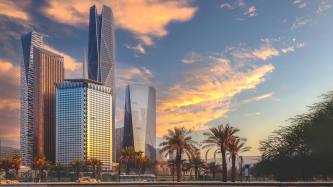While bankers were unanimous that the market correction in Gulf stock exchanges earlier this year has brought values back to much more realistic levels, there was also consensus that some ‘blood’ would be seen, especially among retail investors.
Speaking at The Banker’s GCC Capital Markets Breakfast Briefing in Singapore during the recent IMF/World Bank meetings, Ibrahim Dabdoub, chief executive of National Bank of Kuwait and one of four panelists, said that price/earnings (P/E) ratios of 60 to 70 reached at the end of 2005 were unsustainable. “Now that some normality has returned I hope all involved – investors, banks and regulators – have learnt their lessons.”
Saudi index fall
Asked about where he saw the stock markets at the end of 2006, Brad Bourland, chief economist of Saudi Arabia’s Samba Financial Group, noted that the Saudi index had fallen from 20,000 at end of February to a low of 10,000 at the end of May. “It takes a long time after a significant psychological shock to the market to go back up, so I don’t see a rebound to 20,000 any time soon. It would be optimistic to see the market above 14,000 by year-end,” he said.
Mr Dabdoub sees the market going sideways in most, if not all, of the Gulf countries with a lot more selectivity in stocks and no uptick.
Panelist R Seetharaman, deputy chief executive of Doha Bank, said he is optimistic, particularly on Qatar stocks, while Hashem Montasser, head of regional asset management at EFG-Hermes, added that he is cautiously optimistic, with a preference for the more realistic valuations shown in Kuwait and the smaller markets of the UAE, Bahrain and Oman, where he sees meaningful positive returns by year-end. Mr Montasser is less optimistic about the Saudi and Qatar markets.
Blood in the streets
Andrew Duff of National Bank of Oman asked two searching questions – why has there not been blood in the streets after the correction and how can the capital markets be developed without strong savings rates?
Commenting on ‘blood in the streets’, Mr Dabdoub said some would be seen at a retail level but not on a big scale. “It is not going to be serious because the underlying macroeconomic fundamentals are very good.”
Mr Bourland agreed that the damage on the streets will not be as much as could be expected for the size of correction that occurred. The overall view was that the damage on investors will be felt but will be absorbed and the impact on the banks will be minimal.
Institutional bank
Looking at the institutional investor situation, Mr Bourland noted that there are virtually no pension funds and no corporate pension funds in the region. “Although there is a growing insurance market, which must invest locally, it will be a long time before we see a well-established institutional investor base in the region because of this absence of corporate pension funds.”
Nevertheless, Mr Bourland painted a glowing picture of the massive amount of capital that is expected to flow into the region in the future.
Given that the price of oil from the early 1980s to the early part of this century averaged about $20 a barrel, he asked what the price would be over the next 30 years. Mr Bourland said that $50 a barrel has become “the new $20” and the capital flows over the next 30 years, taking $50 as the basic price, will bring in an estimated $13,000bn in oil revenues to Saudi Arabia and a total of $24,000bn to the six Gulf Cooperation Council (GCC) states.
With these huge amounts there is a lot to consider in the GCC capital markets.











